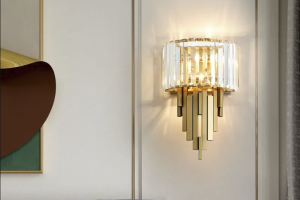Wall paintings have a rich and diverse history that dates back to ancient times. The earliest known examples of wall paintings can be traced back to the prehistoric era, with cave paintings found in places like Lascaux in France and Altamira in Spain. These early forms of wall art were created using natural pigments and depicted scenes of everyday life, animals, and hunting rituals. As civilizations developed, so did the art of wall painting. In ancient Egypt, for example, wall paintings adorned the tombs of pharaohs and depicted scenes from mythology and the afterlife. The ancient Greeks and Romans also used wall paintings to decorate their homes and public buildings, often depicting scenes from mythology, history, and daily life.Dylonon
During the Renaissance, wall painting reached new heights of sophistication and artistry. Artists like Michelangelo, Leonardo da Vinci, and Raphael created stunning frescoes that adorned the walls and ceilings of churches, palaces, and villas. These masterpieces showcased the technical skill and creativity of the artists, as well as their ability to capture the human form and convey emotion through paint. In more recent times, wall painting has continued to evolve, with artists experimenting with new techniques, styles, and subject matter. From the murals of the Mexican Muralist movement to the street art of Banksy, wall painting has remained a powerful and influential form of artistic expression.
Techniques and Styles: A Closer Look at Different Approaches to Wall Painting
Wall painting encompasses a wide range of techniques and styles, each with its own unique characteristics and aesthetic appeal. One of the most traditional techniques is fresco painting, which involves applying pigments directly onto wet plaster. This method allows the paint to become an integral part of the wall, creating a durable and long-lasting work of art. Fresco painting was popularized during the Renaissance and is still used by artists today to create large-scale murals and decorative panels.
Another popular technique is mural painting, which involves creating large-scale works of art directly on the surface of a wall. Murals can be painted using a variety of mediums, including acrylics, oils, and spray paint, and can range in style from realistic to abstract. Street art is a contemporary form of mural painting that often incorporates political or social commentary and can be found in urban environments around the world. Trompe l’oeil is a style of wall painting that creates the illusion of three-dimensional space on a flat surface. This technique is often used to create realistic depictions of architectural elements, landscapes, and still-life compositions.
In addition to these traditional techniques, modern artists are also exploring new approaches to wall painting, such as digital projection mapping and interactive installations. These innovative methods allow artists to create immersive and dynamic experiences that engage viewers in new and exciting ways. Whether using traditional or cutting-edge techniques, wall painting continues to be a vibrant and evolving art form that captivates audiences with its beauty and creativity.
The Influence of Wall Paintings on Culture and Society
Wall paintings have played a significant role in shaping culture and society throughout history. In ancient civilizations, wall paintings were used to communicate religious beliefs, record historical events, and celebrate cultural traditions. For example, the wall paintings found in the ruins of Pompeii provide valuable insights into daily life in ancient Rome, depicting scenes of feasting, entertainment, and mythology. In medieval Europe, wall paintings adorned the interiors of churches and cathedrals, serving as visual representations of religious stories and moral teachings for illiterate congregations.
During the 20th century, wall paintings became a powerful tool for social and political activism. The Mexican Muralist movement, led by artists like Diego Rivera and David Alfaro Siqueiros, used murals to convey messages of national identity, social justice, and labor rights. These monumental works of art became symbols of resistance and solidarity for marginalized communities and continue to inspire artists around the world today. In more recent times, street art has emerged as a form of cultural expression that challenges societal norms and engages with contemporary issues such as urban decay, consumerism, and environmentalism.
Wall paintings also have the power to transform public spaces and create a sense of community and belonging. Murals in urban areas can beautify neighborhoods, promote cultural diversity, and foster a sense of pride and identity among residents. In this way, wall paintings have the ability to bring people together, spark dialogue, and inspire positive change within society.
Famous Wall Paintings Around the World: A Tour of Must-See Masterpieces
Throughout history, countless masterpieces of wall painting have captivated audiences with their beauty, creativity, and cultural significance. One of the most iconic examples is the ceiling of the Sistine Chapel in Vatican City, painted by Michelangelo between 1508 and 1512. This monumental fresco depicts scenes from the Book of Genesis and is renowned for its technical mastery, dramatic composition, and emotional intensity. The Sistine Chapel ceiling remains one of the most visited and revered works of art in the world.
In Mexico City, the Palacio de Bellas Artes is home to a series of stunning murals by Diego Rivera that celebrate Mexico’s history, culture, and revolutionary spirit. Rivera’s bold use of color and dynamic compositions make these murals a must-see for art enthusiasts and history buffs alike. In Italy, the Villa Farnesina in Rome features exquisite frescoes by Raphael that showcase his exceptional talent for depicting classical mythology with grace and elegance.
Moving to more contemporary examples, the Berlin Wall East Side Gallery is a powerful testament to the enduring impact of wall painting as a form of protest and expression. After the fall of the Berlin Wall in 1989, over 100 artists from around the world transformed a section of the remaining barrier into a vibrant outdoor gallery filled with murals that convey messages of hope, freedom, and unity.
From ancient frescoes to modern street art, these famous wall paintings offer a glimpse into the rich tapestry of human creativity and imagination that continues to inspire and resonate with audiences across generations.
The Evolution of Wall Painting: How Contemporary Artists are Pushing Boundaries
Contemporary artists are pushing the boundaries of wall painting by experimenting with new techniques, materials, and concepts that challenge traditional notions of art and space. Digital projection mapping has emerged as a cutting-edge method for creating immersive and interactive wall paintings that transform architectural surfaces into dynamic canvases. Artists use specialized software to project moving images onto buildings or other structures, creating mesmerizing visual experiences that engage viewers in unexpected ways.
Interactive installations are another innovative approach to wall painting that invites audience participation and exploration. These works often incorporate elements such as light, sound, or motion sensors to create multi-sensory experiences that blur the line between art and technology. By breaking down barriers between the artwork and the viewer, interactive installations redefine the relationship between artist and audience and encourage new forms of creative expression.
In addition to technological advancements, contemporary artists are also redefining the content and purpose of wall painting by addressing pressing social issues such as climate change, inequality, and human rights. Murals that advocate for environmental conservation or celebrate cultural diversity have become increasingly prevalent in public spaces around the world, serving as powerful reminders of our shared responsibility to protect our planet and promote social justice.
By embracing innovation and embracing new ideas, contemporary artists are reinvigorating the tradition of wall painting and expanding its potential as a medium for artistic exploration and social engagement.
Preserving Wall Paintings: The Challenges and Importance of Conservation

Preserving wall paintings presents unique challenges due to their vulnerability to environmental factors such as humidity, temperature fluctuations, pollution, and physical damage. Over time, these factors can cause paint to fade or flake off, plaster to deteriorate, or mold to develop on the surface of the artwork. Conservation efforts are essential to protect these valuable cultural treasures for future generations.
Conservators use specialized techniques such as cleaning, stabilizing fragile surfaces, repairing damaged areas, and applying protective coatings to ensure the longevity of wall paintings. In some cases, advanced scientific methods such as infrared imaging or X-ray fluorescence analysis are employed to study the materials used by the original artists and better understand their techniques.
The importance of conservation extends beyond preserving the physical integrity of wall paintings; it also encompasses safeguarding their historical significance and cultural value. By protecting these works of art from deterioration or destruction, conservators help maintain a connection to our collective past while ensuring that future generations can continue to appreciate their beauty and significance.
How to Incorporate Wall Paintings into Your Home: Tips for Adding Beauty to Your Space
Incorporating wall paintings into your home can add beauty, personality, and visual interest to your living space. Whether you prefer traditional oil paintings or contemporary murals, there are numerous ways to showcase art on your walls that reflect your personal style and enhance your home decor.
One popular approach is to create a gallery wall by arranging a collection of smaller paintings or prints in a cohesive arrangement. This can be done using matching frames for a uniform look or mixing different styles for an eclectic feel. Gallery walls are versatile and can be customized to fit any room size or layout.
For a bold statement piece, consider investing in a large-scale mural or oversized canvas painting that becomes a focal point in your home. Murals can transform an entire room with their vibrant colors and striking imagery while adding a sense of drama and personality.
If you prefer a more subtle approach to wall art, consider incorporating smaller paintings or prints into your existing decor by placing them on shelves or mantels or leaning them against walls for a casual yet sophisticated look.
In conclusion, wall paintings have played an integral role in human history as a means of artistic expression, cultural communication, social activism, and aesthetic enhancement. From ancient cave paintings to contemporary street art, this timeless art form continues to captivate audiences with its beauty, creativity, and ability to inspire meaningful connections within society. Whether preserving historical masterpieces or embracing innovative approaches to artistic creation, wall painting remains an enduring testament to human creativity and imagination that enriches our lives in countless ways.





More Posts
Creative Studio Essential: Industrial Gear Pendant
Vintage Industrial Bulb Chandelier for Loft Spaces
Enhance Your Space with a Luxe Crystal Wall Lamp